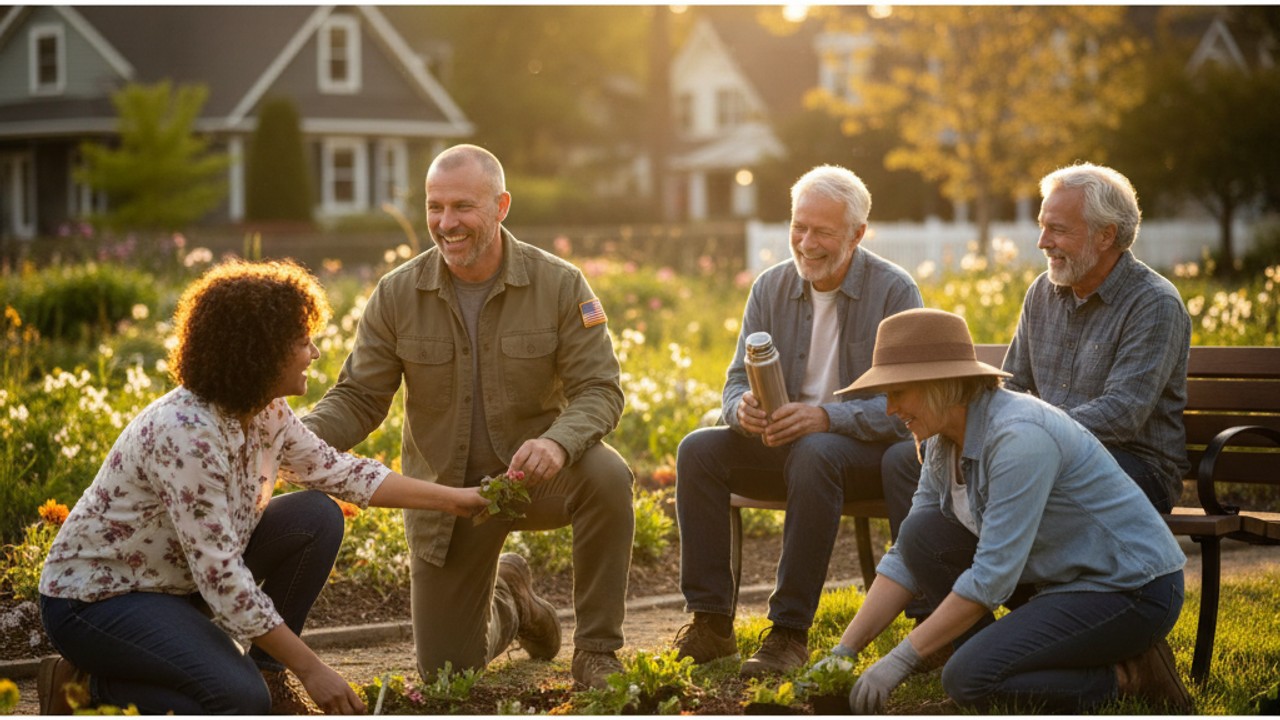Every neighborhood carries stories of quiet heroism and profound healing, often hidden in plain sight. Across the United States, communities are increasingly recognizing the invisible wounds carried by veterans returning from service and the essential role that local volunteerism and neighborhood support play in their recovery journey.
Take the story of John, a veteran who struggled silently with the aftermath of combat. When he returned to his home community, he found solace not just in medical care but in the simple acts of being needed—a chance to help rebuild local parks, attend community service events, and receive the unwavering support of neighborhood volunteers. His healing was as much emotional as physical, a testament to the power of community and heart-centered service.
The Heart of Veteran Healing
Heart disease is the leading cause of death among veterans, with studies showing higher incidences compared to the general population. According to the Department of Veterans Affairs’ 2021 report, nearly 30% of veterans aged 45-64 suffer from some form of cardiovascular disease. Many of these cases are exacerbated by stress, PTSD, and lifestyle changes following active duty. This stark reality has spurred a growing alliance between health organizations, veteran groups, and community volunteers dedicated to heart healing—both medically and socially.
Organizations like the American Heart Association's Veterans and Military Initiative focus on targeted cardiovascular care, while nonprofits such as Team Red, White & Blue foster community reintegration through physical activity and social engagement. Their work illustrates that healing the heart often requires more than medicine—it demands connection.
Strengthening Neighborhood Support Through Volunteerism
Community service is more than charity; it is a lifeline. Volunteers who dedicate their time to veterans and local support networks not only uplift individuals but enrich the fabric of neighborhoods. A recent study from the Corporation for National and Community Service found that 77 million Americans volunteered in 2022, collectively contributing 6.9 billion hours of service. This vast human capital is pivotal for initiatives like neighborhood meal programs, veteran mentorship, and mental health outreach.
Nonprofits such as Volunteer.gov provide platforms to connect willing volunteers with causes that directly impact veterans and community health. At the local level, projects such as community gardening, home repair for disabled veterans, and neighborhood watch programs create safe, supportive environments that nurture recovery and growth.
Lessons from the Frontlines of Service
Stories abound of veterans who found new purpose through giving back. Consider the case of Maria, a veteran who, after overcoming her own health challenges, joined a community volunteer group providing home care for older veterans. Her story is a vivid reminder that service is a two-way street: those who serve are also served by the healing power of community.
These narratives underscore a universal truth: healing veterans requires holistic approaches that combine medical care, emotional support, and community engagement. Neighborhoods that embrace volunteerism create a ripple effect that strengthens everyone—veteran or civilian.
How You Can Help
- Volunteer with organizations supporting veterans or local community health efforts, such as American Red Cross or Team Red, White & Blue.
- Support heart health awareness in your community by participating in or organizing events like the American Heart Association Heart Walk.
- Advocate for funding and programs that address mental health and cardiovascular care among veterans.
- Foster neighborhood networks that focus on inclusive support and outreach to veterans and their families.
In the end, healing is a collective endeavor—one where every act of kindness and service brings us closer to healthier hearts, stronger communities, and honored veterans.



